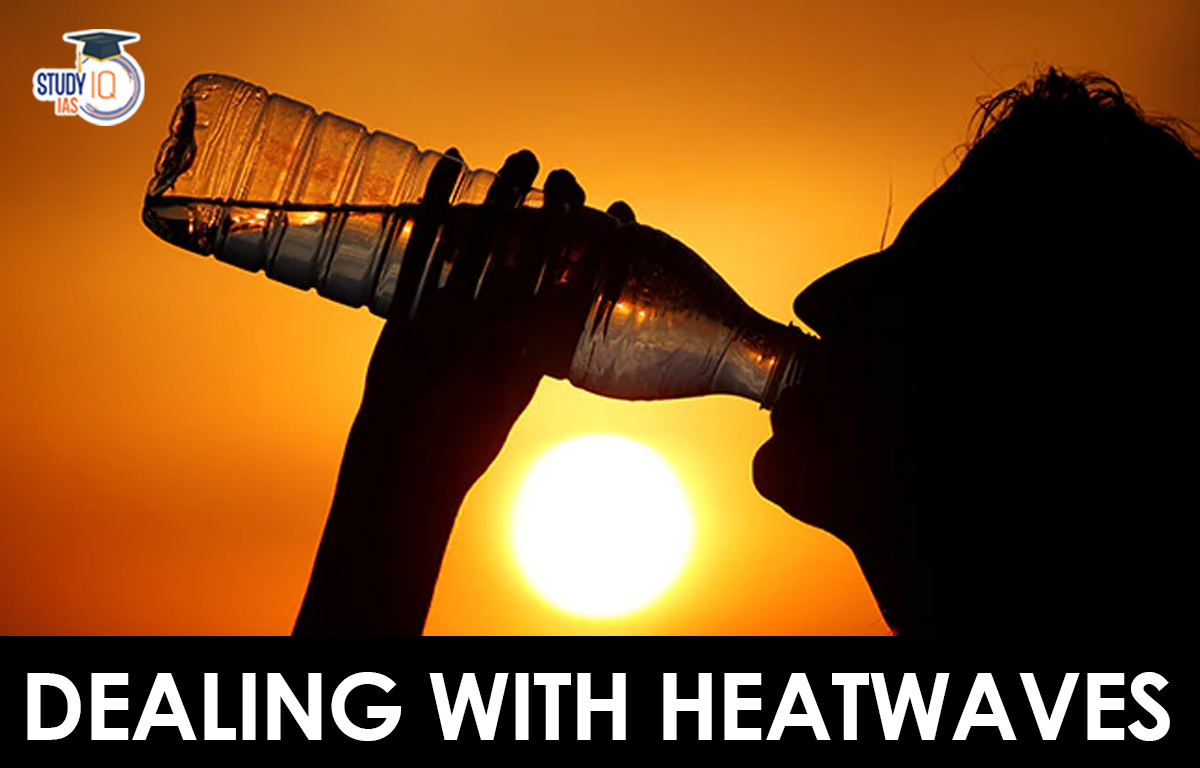Table of Contents
Context: Between April and May 2022, around 350 million Indians were exposed to strong heat stress.
Background of Rising Temperature in India
- Current situation: Summer temperatures across districts in Punjab, Rajasthan, Haryana, Uttar Pradesh, and Bihar on an average rose by 0.5-0.9°C, between 1990 and 2019.
- Similarly, winter temperatures have risen in about 54% of India’s districts.
- Future prediction: It is estimated that maximum temperature will rise by 2-3.5°C in 100 districts and by 1.5– 2°C in around 455 districts, between 2021 and 2050.
- Winter temperatures are likely to rise between 1°C and 1.5°C in around 485 districts.

What are Heatwaves?
- Heat waves are extreme events in which hot temperature in summer months persist for a relatively long period of time.
- In India, heatwaves typically occur between March and June, and in some rare cases even extend till July.
- Criterion for declaring a heatwave in India (as per IMD):
- Heat wave is considered if maximum temperature of a station reaches at least 40°C or more for Plains and at least 30°C or more for Hilly regions.
- Criterion for Describing a Heatwave in Coastal Stations:
- When maximum temperature departure is 4.5°C or more from normal, Heat Wave may be described provided actual maximum temperature is 37°C or more.
Based on Departure from Normal
- Heatwave: If departure from normal is 4.5°C to 6.4°C
- Severe heatwave: If departure from normal is >6.4°C
Based on Actual Maximum Temperature
- Heatwave: When actual maximum temperature ≥ 45°C
- Severe heatwave: When actual maximum temperature ≥47°C
Implications of Heatwaves
- Agriculture output: Higher temperatures due to heatwaves have reduced crop output significantly. For example, majority of cumin crop in Rajasthan has been destroyed.
- Labour productivity: Rising temperatures directly impacts labour productivity, both in urban and rural areas.
- About 50% of India’s workforce is estimated to be exposed to heat during their working hours, including farm labourers, construction workers etc.
- Impact on transportation: Heat stress can have negative impact on transport infrastructure, such as the softening of pavement, which can get damaged by vehicle circulation.
- Indirect economic costs: Heat related illness and mortalities may occur.
- Heatwaves may aggravate social inequalities (as the poor are more vulnerable to the impacts of heatwaves).
- Shortage of power: Heatwaves may increase electricity consumption due to rise in usage of Air Conditioners, fans and coolers.
- Forest fires: Heatwaves exacerbate the hot and dry conditions that help fires spread faster, burn longer and rage more intensely.
- Large areas of forests are already under threat due to such effects of heatwaves.

Mitigating the Effects of Heatwaves
- Increasing green cover: Since the problem is serious in urban landscape, it is imperative that steps should be taken to increase urban green cover.
- Increasing the density and area of urban forests will help reduce the effects of extreme heat.
- Restoring water bodies: Expanding wetlands and restoring dead and decaying water bodies may ensure ecological functioning apart from reducing extreme heat.
- Heat-reflective construction: There is an urgent need to push for greater usage of permeable materials in civic infrastructure and residential construction that will reduce temperatures.
- Heat-absorbent galvanized iron and metal roof sheets must be avoided in modern buildings.
- Promoting public transportation: Promoting public transportation will help in reducing personal vehicle usage.
- Reducing landfills: Landfills are responsible for emitting methane, which catches fires easily.
- These fires will exacerbate urban heat and weather variability.
Way Forward
- Improving forecasting: Improving our forecasting ability will help in reducing the potential impact of heat on food production.
- Local trends: Minimum support prices need to be fixed by looking at local trends in rainfall and heatwaves. This will help in capturing effects of heat on food production, storage and sale.
- Policies and guidelines: There is an urgent need for developing detailed policy guidelines on weather variability and urban heat management at the State, district, city and municipality ward levels.


 MPPSC FSO Recruitment Notification 2025 ...
MPPSC FSO Recruitment Notification 2025 ...
 UNESCO World Heritage Sites of India Lis...
UNESCO World Heritage Sites of India Lis...
 Consolidated Fund of India, Meaning and ...
Consolidated Fund of India, Meaning and ...





















